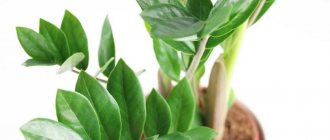Aloe flowering at home
The likelihood of flowers appearing in aloe occurs only when the plant is mature - it must be more than 5 years old. A prerequisite for this is a period of rest, which should take place during the winter months. At this time, the succulent needs special care.
Desert succulent flowers look very unusual
The flowering process consists of several main stages:
- The appearance of a strong and elastic peduncle.
- Stretching the peduncle up to 35 cm in length (in some varieties of agave it can reach 80 cm).
- The formation of inflorescences consisting of many buds and their gradual increase in size.
- Opening of flowers shaped like hollow elongated tubes.
The color of homemade aloe flowers can be bright orange, less often yellow, pinkish and deep scarlet.
Additional Information! In the first years of life, the flower does not gain color and is useless when trying to treat it with juice. At this time, the plant is actively growing its root system and leaves.
Frequency and timing of flowering
Flower growers who have been growing aloe for a long time note that it blooms no more than once every 15-20 years. However, if the growing conditions are violated, the succulent may never bloom.
In most cases, aloe blooms at the beginning of spring. The possibility of bud formation depends on how the flower overwintered and whether the conditions of maintenance and care were met. By the end of spring, the plant begins to shed faded flowers, but in rare cases, flowering can last until autumn.
Aloe blooms most often in spring
Description
It should, however, be mentioned that not all varieties of perennials are so powerful in healing diseases. Only Aloe Vera has such magical properties. This is the most powerful anti-inflammatory and antiviral plant with antibiotic powers. Therefore, it is the most popular among other types of perennials. Aloe sometimes resembles agave.
Aloe is represented by several varieties of asparagus-flowered perennial herbs or shrubs. It belongs to the Asphodelaceae family. Among them there are trees that sometimes reach 15 meters in height. The diameter of the trunks of these trees can be 2 m. All species are leaf succulents and live in the hot deserts of Africa, Asia, and America. Now it is already widespread in southern Europe. And in other latitudes it is classified as indoor. In such conditions, the plant can now be found everywhere.
The most common flowering species
Aptenia care and reproduction: varieties and home conditions
There are approximately 300 known flowering varieties of this succulent. Most of them bloom in spring or early summer. The most popular types:
- Aloe Vera - blooms with bright orange flowers and is considered the most common in indoor floriculture.
- Fan-shaped - its leaf plates are arranged accordingly, and the buds are painted red.
- Aloe Jackson - distinguished by purple-violet tube flowers.
- Aloe Descoings - this variety has triangle-shaped leaves and yellow buds.
- Tree aloe - it is characterized by a variety of flower shades - bright red, light yellow, deep orange and pink.
- Camperi - distinguished by a branched peduncle, at the ends of which there are brushes with scarlet buds.
- A beautiful aloe - its bell-shaped flowers have a purple-coral tint.
- Soapy - the tubular buds of this species are colored in red, yellow or pink tones with specks of a darker shade.
- Frightening (aka Terrible) - the distinctive feature of the variety is the thorns on the leaf blades and bright orange-scarlet inflorescences.
- White-flowered is the rarest indoor species; it came from Madagascar and is distinguished by white-cream buds.
Inflorescences of different species differ in color and shape
What types of aloe bloom?
@Botanichka.ru
Agave blooms only when it is in suitable conditions. In order for the plant to show off in the bedroom or kitchen, it needs to be provided with comfortable living conditions in a pot on the windowsill. However, it is important to remember that not all types of aloe bloom. You can hope for success with the agave:
- faith;
- tree-like;
- fan;
- soapy;
- terrifying;
- white-flowered.
You can expect flowering from striped, tiger, dichotomous, cap-shaped, and short-leaved aloe. Agave called “Marlota” (woody or shrubby), “Campery”, “Jackson” can also shoot arrows.
Why don't buds set?
Aloe variegated or tiger - what kind of flower is it?
The reason for the lack of flowering is usually unsuitable conditions. Although the plant itself is unpretentious and grows well in almost any home, it will require special care to help it bloom.
The main reasons for the lack of flowering:
- The age of a particular flower specimen is too young.
- Violation of the irrigation regime, leading to drying out of the soil or stagnation of moisture in it.
- Lack of sunlight.
- Unsuitable soil mixture.
- Depleted soil and lack of nutrients.
- Lack of timely replanting of the plant, which causes crowding of the roots inside the container.
- Non-optimal level of humidity in the room.
- Sudden changes in temperature and drafts.
Factors such as the appearance of parasitic insects and infection with various diseases cannot be ruled out.
How to make aloe bloom at home
For flowering to occur on time, it is necessary to provide the bush with a clear schedule with timely wintering. During rest, internal life processes slow down and resources accumulate for active growth after emerging from hibernation.
Without a noticeable change of seasons, the onset of aloe flowering is impossible
At home, the onset of a dormant period is not typical for agave - it needs to create suitable conditions. To do this, the temperature in the room is gradually lowered to +11... +14 degrees, after which the pot with the succulent is removed to a dark place. They begin to water the flower less and less, gradually reducing the number of procedures to nothing.
What are the differences between aloe vera and aloe vera (agagave)
If you compare aloe vera and agave, the differences between them are in appearance and method of application. The name of the tree aloe (agagave) speaks for itself - it has a trunk from which leaves extend. Faith grows in the form of a rosette, almost not rising above the surface of the earth.
The main difference between aloe and aloe vera is that the latter is grown on an industrial scale in entire plantations for the production of medicines and cosmetics.
Medicinal juice is extracted only from the leaves of four-year-old plants; in tree aloe, the stem is also processed.
Care rules on which flowering depends
The natural habitat of the agave is desert areas with dry and hot air, open to direct sunlight. To achieve aloe flowering, you will need to create a comfortable environment for it.
Priming
Aloe tree - what is it, description of the plant
Soil with a neutral or slightly acidic reaction is preferred. You can purchase a ready-made mixture or prepare it yourself from turf soil, river sand and humus. Drainage must be placed at the bottom of the pot.
Note! On the second day after watering, the soil around the succulent should be carefully loosened.
Fertilizers
The plant will develop properly with regular application of mineral fertilizers. To do this, use ready-made complex compositions for succulents strictly in accordance with the instructions.
Watering
The desert flower should not be watered too often, as waterlogging is detrimental to it. For this purpose, settled water is used.
Temperature and humidity level
Although most varieties of aloe can withstand temperature changes from +6 to +28 degrees, it is advisable to maintain an optimal temperature indoors within +18-20 degrees. Humidity should be kept at an average level; there is no need for additional spraying.
A young plant must be replanted annually
Diseases and pests of aloe
Aloe is practically not affected by diseases and pests. Overwatering can cause root rot or dry rot.
When root rot appears, plant growth stops and the stem dries out. The plant is removed from the soil, the damaged part of the root system is removed, and the remaining part is treated with fungicides and replanted in the ground, to which a large amount of sand is added.
Signs of dry rot do not appear externally; the plant dries out from the inside. Since the disease is usually diagnosed late and has a very rapid progression, plants usually die. Therefore, it is necessary to regularly treat aloe with a fungicide solution for preventive purposes.
How to properly care for blooming aloe
If you managed to achieve budding of the succulent, at this time you should change the care technique. During the flowering period, the bush is provided with maximum peace, only slightly increasing the temperature in the room and increasing the daylight hours to 12 hours with the help of phytolamps.
When the plant gains color, it is advisable to feed it with potassium and phosphorus, and then stop fertilizing. The watering mode does not change.
Note! Once aloe blooms, it becomes poisonous and can cause headaches as well as other ailments in people.
What happens when the petals fall
When aloe blooms at home, the dried flowers and peduncle are carefully removed from the bush. This must be done, since they not only disrupt the decorative appearance of the plant, but also require nutrients.
It is recommended to treat the cut with a solution of potassium permanganate and sprinkle it with crushed activated carbon. Next, the plant is fed with a complex mineral product containing nitrogen and liquid organic fertilizer.
Additional Information. In the wild, after aloe blooms, fruits form in place of the buds. At home, this is impossible, since there is no chance of cross-pollination.
Rest period
For the winter period following flowering, reduce the number of waterings. It is enough just to moisten the soil in a pot with a succulent once a month. Even with no watering at all, the flower will feel great. The plant needs to be watered only when the soil is completely dry.
During the dormant period, the bush is again moved into a room with an air temperature reduced to +10... +14 degrees. The air there must be dry, otherwise the likelihood of infection with fungal diseases increases.
Under favorable conditions, aloe will definitely delight you with flowering
Aloe has many medicinal properties and is used in folk medicine to treat various diseases. The decorative nature of its leaves has made the flower very popular as a houseplant. Due to the fact that aloe blooms very rarely, this phenomenon is considered a good omen, bringing happiness, health and good luck. But, following the above recommendations, you can stimulate the plant and wait for flowering.
Some historical facts
The word "aloe" in Arabic means "bitter plant". Aloe received this name because of the bitter taste of all its parts. The strong medicinal properties of this bitter perennial were first mentioned among the Sumerians and Ancient Egypt.
The plant is listed in all medical books and reference books of medicinal herbs. They were used to treat many inflammatory processes when antibiotics and antiviral agents had not yet been invented.
Columbus wrote in his notes that he considered 4 plants important and necessary for life, and he added aloe to this four. Many other travelers, scientists and even writers mentioned this wonderful plant, and it’s not worth mentioning the ancient healers.
The plant is often called agave. This name comes from the opinion that the perennial blooms once every hundred years. But few people know exactly how aloe blooms, due to its rare flowering. Sometimes, for it to bloom at home, proper care is necessary. Agave can bloom much more often if grown correctly, or it may not bloom at all.











